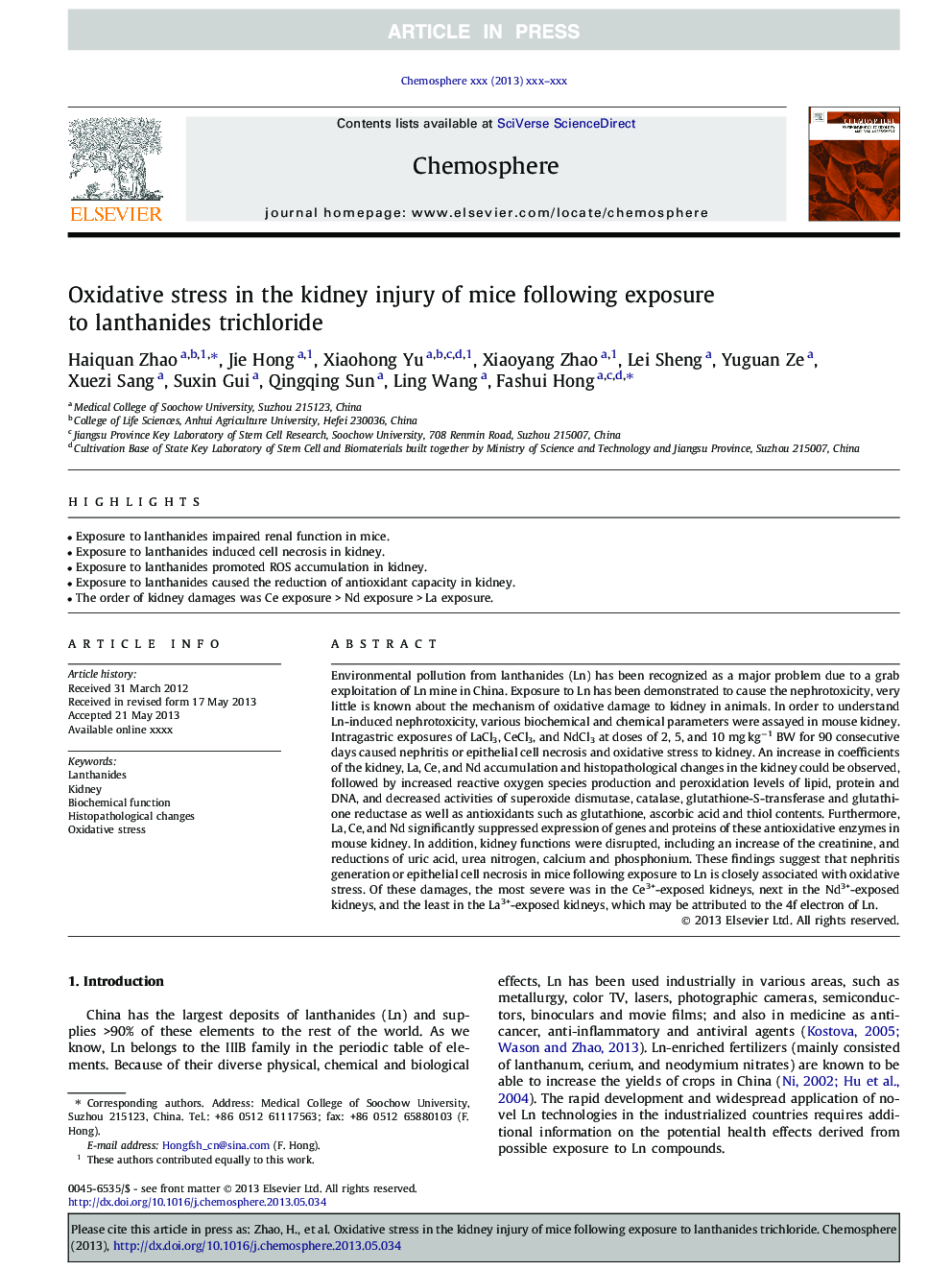| Article ID | Journal | Published Year | Pages | File Type |
|---|---|---|---|---|
| 6310252 | Chemosphere | 2013 | 10 Pages |
Abstract
Environmental pollution from lanthanides (Ln) has been recognized as a major problem due to a grab exploitation of Ln mine in China. Exposure to Ln has been demonstrated to cause the nephrotoxicity, very little is known about the mechanism of oxidative damage to kidney in animals. In order to understand Ln-induced nephrotoxicity, various biochemical and chemical parameters were assayed in mouse kidney. Intragastric exposures of LaCl3, CeCl3, and NdCl3 at doses of 2, 5, and 10 mg kgâ1 BW for 90 consecutive days caused nephritis or epithelial cell necrosis and oxidative stress to kidney. An increase in coefficients of the kidney, La, Ce, and Nd accumulation and histopathological changes in the kidney could be observed, followed by increased reactive oxygen species production and peroxidation levels of lipid, protein and DNA, and decreased activities of superoxide dismutase, catalase, glutathione-S-transferase and glutathione reductase as well as antioxidants such as glutathione, ascorbic acid and thiol contents. Furthermore, La, Ce, and Nd significantly suppressed expression of genes and proteins of these antioxidative enzymes in mouse kidney. In addition, kidney functions were disrupted, including an increase of the creatinine, and reductions of uric acid, urea nitrogen, calcium and phosphonium. These findings suggest that nephritis generation or epithelial cell necrosis in mice following exposure to Ln is closely associated with oxidative stress. Of these damages, the most severe was in the Ce3+-exposed kidneys, next in the Nd3+-exposed kidneys, and the least in the La3+-exposed kidneys, which may be attributed to the 4f electron of Ln.
Related Topics
Life Sciences
Environmental Science
Environmental Chemistry
Authors
Haiquan Zhao, Jie Hong, Xiaohong Yu, Xiaoyang Zhao, Lei Sheng, Yuguan Ze, Xuezi Sang, Suxin Gui, Qingqing Sun, Ling Wang, Fashui Hong,
